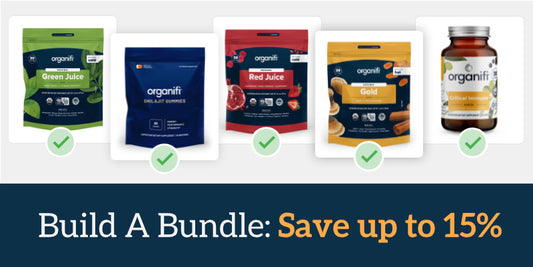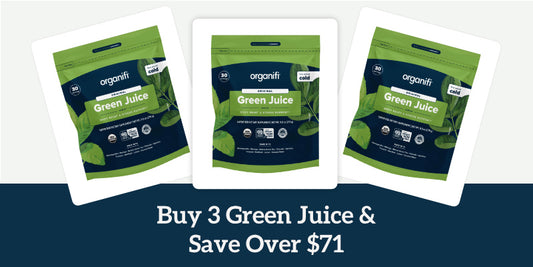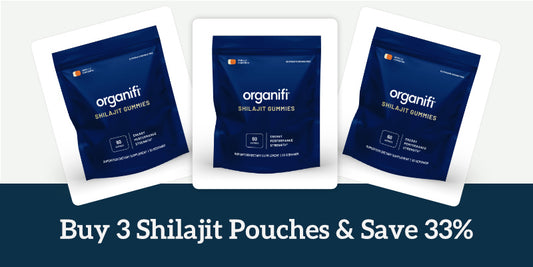Written by: Kat Gal
You may be familiar with the benefits of turmeric, but how much turmeric absorption is your body capable of?
Turmeric is one of the most potent spices you can use when cooking, and one of the top supplements you can take for your health.
It may naturally reduce inflammation and have antibacterial, antifungal, and antiviral properties. It is a staple of Ayurvedic medicine hailed as a super-herb that can protect your body from all kinds of illness from bleeding gums and indigestion, to chronic pain, heart disease, and even cancer.
Today, turmeric is the star of over twenty thousand medical papers and citations in western medicine all over the world, with recent studies highlighting its potential neuroprotective effects - it could fight depression, Alzheimer’s and other degenerative diseases.
The remarkable health benefits of turmeric have turned it into a go-to supplement found in anything from smoothies to trendy golden milk lattes.
However, these may not always help you get the most out of this superfood; turmeric’s active compound -curcumin- isn’t as easy to absorb by the human body as one might hope.
Turmeric absorption depends on how you consume it; on its own, it's rapidly eliminated.
Ensuring nutrient absorption is just as important as making sure you’re getting a healthy and balanced diet. When it comes to certain superfoods, like turmeric, it’s important to know that there is a difference between simple consumption and full-absorption.
If you’re interested in preventative care, natural medicine, and want to get the benefits of turmeric in your body (instead of flushing them down the toilet) this article will teach you all you need to know to maximize turmeric absorption with each intake.
Nutrient Absorption: What You Eat Isn’t Always What You Get
According to the board-certified and licensed nutritionist, Monica Reinagel, author of multiple bestselling books on nutrition, and host of the Nutrition Diva Podcast, your body might absorb anywhere from 10 - 90% of any given nutrient from any food depending on:
- Your age
- The time of day
- Other foods eaten at the same meal
- Ingredient preparation
- Medications, drugs or supplements you may be on
- Bioavailability of the ingredient
- When and how the ingredients were harvested
- Growing conditions of the food
- Weather and storage
- More
Nutrient absorption depends on multiple simultaneous factors, and it’s essential to understand them if you want to profit from the nutritional value of specific foods - like the benefits of turmeric.
For example, a banana according to the USDA extensive database of the nutritional composition of foods has 422 mg of potassium. But that’s just an approximate average resulting from 14 different samples. A medium banana in that same sample set could provide anything from 364 mg to 502 mg of potassium.
Therefore eating a banana doesn’t mean you’ll always get 422mg of potassium the same way adding one teaspoon of turmeric doesn’t mean you’ll benefit from every gram; it’s all estimates.
When you throw in heat, food interactions, time of day, drugs, and things you ate before, that number is also affected. You’d only get a portion of the banana’s potassium, and that’s an easy to digest food.
When it comes to turmeric absorption, bioavailability is the most critical factor.
The good news is that when you follow recommended dietary guidelines, you’re getting what you need despite the things that may reduce nutrient absorption.
How Nutrients Are Absorbed
The gastrointestinal tract receives the food you eat and processes most of the nutrients in the small intestine, with a few notable exceptions. The small intestine produces digestive juice, which mixes with bile from the liver, and other pancreatic juices to break down macronutrients like proteins, carbohydrates, and fat.
Vitamins and other micronutrients are also separated, and the healthy gut bacteria that live in the small and large intestine produce enzymes that further process the food. Whatever is too large or complex to be handled is eliminated as waste.
This last stage is what makes getting the benefits of turmeric challenging when you consume it on its own; turmeric absorption is prevented by the gut, which has a hard time breaking it down and passes it in stool and urine.
Why Your Body Has Issues with Turmeric Absorption
Numerous research papers suggest that curcumin has “poor absorption, biodistribution, metabolism, and bioavailability.”
That means in humans, curcumin taken orally is barely absorbed at all, it’s quickly metabolized and eliminated out of your system before any health benefits had the time to sink in. The intestines and liver get rid of that teaspoon of turmeric fast if you don’t add an ingredient to slow down the process or intervene with heat.
Fortunately, continuous research on curcumin found some easy ways to overcome these challenges and make turmeric 2,000 times more bioavailable and increase turmeric absorption - both as a cooking ingredient and a supplement.
How to Increase Turmeric Absorption
As you can see, it is not enough to simply take your turmeric supplements or add turmeric to your golden milk tea - you have to take them in a way that increases its bioavailability. There are multiple ways to increase turmeric absorption naturally, these are our top four:
#1 Add Some Pepper to Your Turmeric Mix
Studies show that a key component in black pepper, piperine, enhances the bioavailability of turmeric by 2000 times; this, in turn, boosts turmeric absorption dramatically.
- Add black peppercorns to your turmeric concoction. If you’re making golden milk tea, scoop them out once you boiled the tea and before you add the milk.
- Sprinkle black pepper into your meal any time you use turmeric as an ingredient.
- Make sure your supplements in the form of pills, powder, or turmeric concentrate also list black pepper or piperine as an ingredient.
Our signature rest, recovery, and relaxation tea Organifi Gold (the perfect base for a golden tea mix - just add milk!) has black pepper, in addition to seven other ingredients that bring out the power and flavor of maximum strength turmeric for even more health benefits.
#2 Leverage Healthy Fats
Turmeric is a fat-soluble herb. This means that it dissolves in fat and that without it optimum turmeric absorption may not be guaranteed; curcumin could have a difficult time making it past your stomach and into your bloodstream.
To experience the full benefits this spice has to offer, make sure that you take it with a bit of fat.
- When cooking with turmeric - for example, making curry - use some form of oil in your recipe. Coconut oil is usually an excellent choice as it can reduce inflammation, is an antifungal, antiviral and antibacterial and can be very remedying.
- A bit of avocado in your salads, coconut oil in your dishes, tahini on your veggies, or a spoonful of raw nut butter may be enough to help your body digest it.
- When drinking turmeric in the form of the popular golden milk, coconut milk and/or coconut oil in the recipe will help with proper absorption.
Make sure you choose healthy fats! The benefits of olive oil, avocado, coconut oil, raw nuts, and seeds surpass animal products in general, plus they promote good cholesterol.
#3 Heat it Up
Researchers were able to increase turmeric absorption in both in vitro and in vivo experiments by twelve times (12X) using heat. If you’re having smoothies or cold meals, use one of the other previous methods.
#4 Try Quercetin-Rich Foods
Some studies suggest that quercetin, a flavonoid found in plant-based foods- increased turmeric absorption and bioavailability significantly. These foods may inhibit the enzymes that deactivate curcumin.
- Add quercetin-rich foods to your salads, teas, and stir fry meals.
- Onions, capers, broccoli, serrano peppers, dark leafy greens, and apples, all contain quercetin.
- Green tea, black tea, and even red wine have some small amounts as well.
We hope this helps you absorb all those turmeric benefits for a healthier gut, life, and more. Share if you found it useful!
About The Author
Kat Gal is the creator of Long Distance Relationship Help (http://longdistancerelationshiphelp.com/), a site which offers tips, tools, inspiration and resources to create a successful and happy relationships, no matter where in the world you may be. She knows from personal experience that love is possible despite the miles, you just have to navigate your way around it. She is passionate about the world and finds her creativity outlet as a writer and educator. You can follow her on her website and her Facebook page.






1 comment
Thanks for the great information